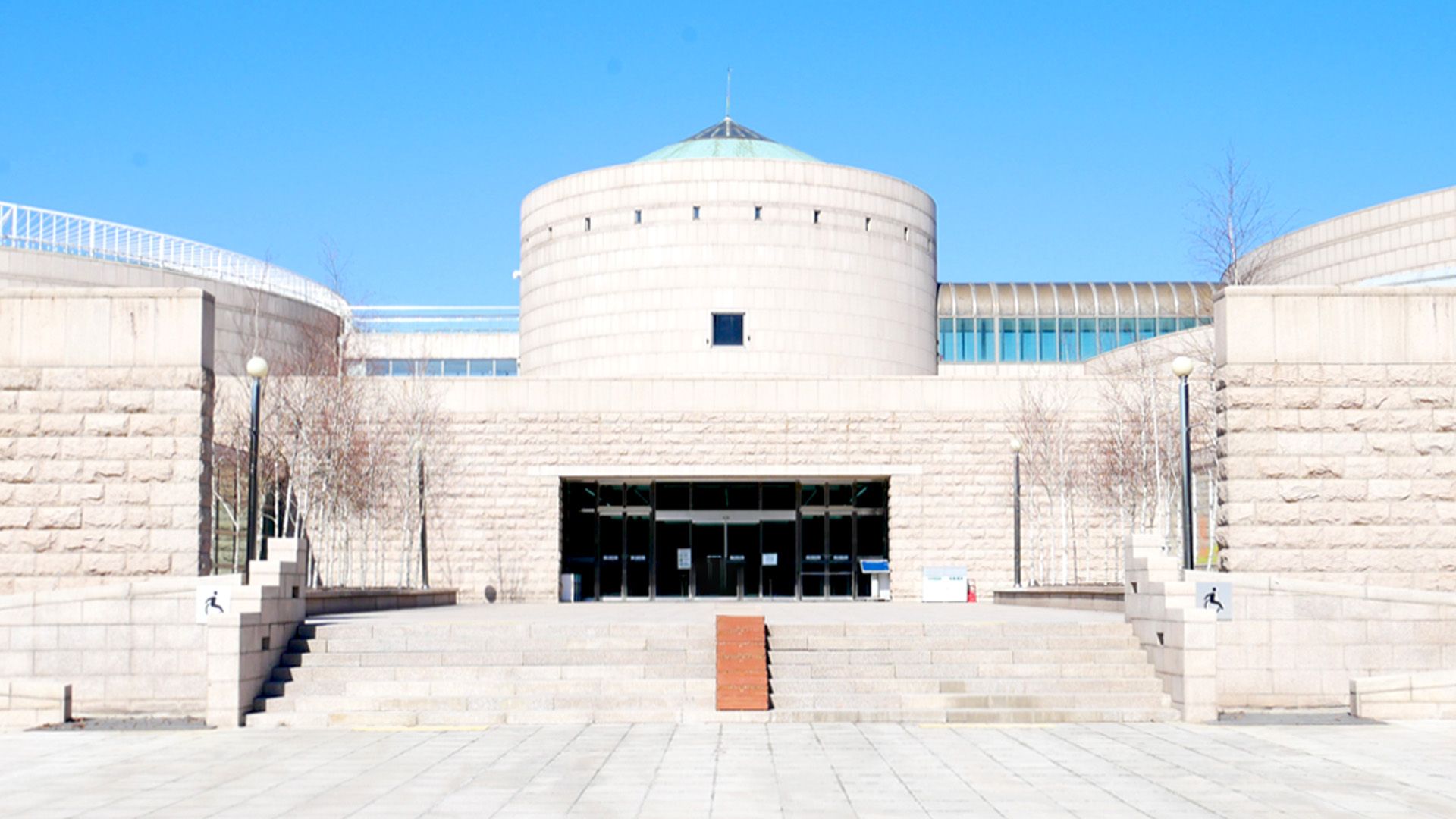전시 상세


한국 현대 도자공예: 영원의 지금에서 늘 새로운
(Unfolding the Dynamics of Modern Ceramics in Korea)
전시서문 Exhibition Foreword
한국인에게 도자기는 특별한 의미를 지닌다. 특히 '천하제일 비색청자'와 '달항아리'는 한반도의 미의식을 대표하는 민족적 상징이다. 도자공예는 '시대와 환경의 필요에 따라 도기와 자기로 생산된 인공물'로서, 우리의 삶과 문화를 이해하는 표상이 되어왔다. 《한국 현대 도자공예: 영원의 지금에서 늘 새로운》 전시는 이와 같은 자랑스러운 도자 역사를 바탕으로, 현대 환경에서 새롭게 변화하며 다양한 역할을 해온 도자공예의 모습을 조명한다. 해방 이후 한국은 수많은 격변기를 지나왔으며 도자공예 역시 그에 반응하며 변화와 발전을 거듭해 왔다. 그럼에도 불구하고 한국 현대 도자에서 전통의 가치는 결코 사라지지 않았다. 미술사가 고유섭(금, 1905-1944)은 전통이란 변화하는 환경 속에서 고유한 가치를 드러내는 '영원의 지금에서 늘 새롭게 파악된 것' 으로 정의하였다. 이번 전시는 한국 도자공예가 전통을 어떻게 받아들이고, 현대 사회 속에서 어떻게 그 역할을 이어왔는지 탐구하고자 한다. 전시는 시대의 흐름에 따라 구성되며, 전통 도자, 도자 조형, 설치 등 다양한 유형의 도자공예의 모습을 선보인다.
Ceramic holds special meaning for Korean people. In particular, "Bisaek celadon, the best under heaven" and the Dalhangari, also known as the Moon Jar (White Porcelain Jar), stand as representative symbols of a national aesthetic sense. Ceramics are "artifacts that are produced out of Dogi and Jagi depending on the times and environment" and have become symbols that afford us insights into our own lives and culture. The exhibition Unfolding the Dynamics of Modern Ceramics in Korea presents ceramics, which have been transformed within the modern environment and taken on various roles, in the context of this esteemed ceramic heritage. Korea has experienced many periods of rapid change after its independence, and ceramics have also undergone change and growth in response. Despite such change, modern Korean ceramics have never completely abandoned their traditional values. Aesthetics scholar Ko Yuseop (1905-1944) defined tradition as immutable values that are "always newly understood in the now of forever" in a world that is ever changing. This exhibition examines how Korean ceramics embrace tradition, and how they found their role within modern society. The exhibition is divided by period and features a variety of ceramic works, including traditional ceramics, sculptural ceramics, and installations.

프롤로그. 현대성의 태동 PROLOGUE. THE BEGINNING OF MODERNITY
일제 강점기의 그늘과 한국전쟁의 상흔을 극복하고자 했던 1950년대는 한국 현대 도자공예의 새로운 출발점이 된 시기였다. 특히 세 연구소의 활동이 주목되는데, 이 중 국립박물관 부설 기관으로 설립된 한국조형문화연구소는 간송미술관 부지에 '성북동가마'를 운영하였고, 조각가 윤효중(1917-1967)이 세운 한국미술품연구소는 '대방동가마'를 운영하여 조선백자와 고려청자를 재현 또는 재해석한 도자기를 생산하였다. 이와 함께 국가 산업 발전을 목표로 한 한국공예시범소는 수출용 도자기를 개발하였는데, 이 시기 연구원들은 미국 유학을 거쳐 대학 도자공예 1세대 교수로 활동하며 한국 도자 교육의 기반을 마련하였다. 비록 1950년대 도자 제작 환경은 경제적인 어려움으로 인해 지속적인 성과를 내기 어려웠으나, 이들 연구소의 활동은 현대성을 주체적으로 모색하며 한국 도자공예의 정통성을 계승하는 중요한 토대를 마련했다는 점에서 의의가 있다.
Modern Korean ceramics entered a new era in the 1950s when Korea was focused on recovering from the shadow of Japanese colonial rule and the scars from the Korean war. The activities of three research institutions are especially noteworthy. The Korean Art Society which was established as a museum affiliated organization ran the Seongbuk-dong Kiln on the site of the Kansong Art Museum. The Korean Research Center of Ceramic Arts Ware established by sculptor Yun Hyojoong (1917-1967) ran the Daebang-dong Kiln which produced restorations and reinterpretations of the Joseon white porcelain and the Goryeo celadon. The Korea Handicraft Demonstration Center (KHDC) whose aim was to foster national industrial growth developed ceramics for export. The researchers at the time were those who came back after finishing their studies in the U.S., becoming the first generation of university professors who laid the foundation for ceramic education in Korea. Although consistent production was difficult in the 1950s due to economic difficulties, the work of these institutions was meaningful in terms of the way they actively pursued modernity and established the essential groundwork the succeeding tradition of Korean ceramics.




1부. 정체성의 추구 PART 1. THE PURSUIT OF IDENTITY
한국 도자공예는 1960-1970년대에 본격적으로 현대적 면모를 갖추기 시작했다. 1960년 4:19 혁명과 1961년 5·16 군사정변을 거쳐 수립된 정부는 '경제 개발 5개년 계획'을 추진하며 새로운 국가 비전을 제시했고, 이와 맞물려 등장한 민족중흥 정책은 국가적 정체성을 확립하고 전통을 부활시키는 계기가 되었다. 이러한 배경에서 현대 도자공예는 전통미의 해석과 수용을 중요한 과제로 삼았으며, 도예가들은 '전통의 현대화'라는 창작의 원동력을 얻게 되었다. 또한, 1965년 한일 국교 정상화를 계기로 도자 수출이 증가하고, 서구에서는 한국 전통 도자에 관한 관심이 민속 문화의 맥락을 바탕으로 확대되면서 한국 도자공예의 인지도를 높일 기회가 마련되었다. 이번 섹션에서는 전통을 현대적 조형성으로 재해석한 도자 작품을 비롯해, 화가와 도예가의 협업으로 제작된 도화, 건축 도자, 그리고 관련 영상 다큐멘터리를 포괄적으로 다룬다.
Korean ceramics began to wholeheartedly embrace modernity from the 1960s and 1970s. The government that was established after the April 19 uprising in 1960 and the May 16 military coup the following year presented a new national vision through the Five-Year Economic Development Plan. The concurrent national revival policy became a catalyst for establishing national identity and restoring traditions. Against this backdrop, modern ceramics took on the important task of interpreting and embracing traditional aesthetics, and the initiative of modernizing tradition became the creative momentum for ceramic artists. Ceramic exports increased with the normalization of Korea-Japan diplomatic relations in 1965, and the Western world gained more interest in traditional Korean ceramics within the context of folk culture, which became the basis for raising awareness of Korean ceramics. This part comprehensively presents ceramic works that reinterpret tradition with modern formative aesthetics, ceramic paintings created through collaboration between painters and ceramicists, architectural ceramics, and documentary films.
















<라이브 2>는 전시실에서 옹기 기법으로 조형물을 쌓아 올리는 현장 제작 작품이다. 옹기 제작 방식과 크기, 형태 등은 지역마다의 음식 문화가 반영되어 다양한 모습으로 구현되는데, 이는 흙 코일을 쌓아 올리는 타렴 방식과 흙판을 물레 위에 붙여가며 제작하는 판장 기법으로 대표된다. 오향종은 대학에서 도예과를 졸업한 후 전라남도 무안의 옹기막에서 판장 기법의 옹기 제작술을 습득하고, 옹기가 가지고 있는 고유한 삶의 양식적 가치를 존중하는 작업을 보여주고 있다. 그의 흙에 대한 실험적 태도는 전시실에서 관람객들과 함께 호흡된다.


2부. 예술로서의 도자 PART 2. CERAMICS AS ART
'88서울올림픽'이라는 국가적 이벤트는 도예계에도 큰 변화를 불러왔다. 올림픽을 계기로 정부는 국제적 예술 양식을 적극 수용하는 동시에, 한국 문화를 국제무대에 소개하는 지원을 본격화했다. <동서현대도예전> 등 대규모 국제 교류 전시와 워크숍이 열리면서 대학을 졸업한 작가들은 아카데믹한 영역에서 도예 활동을 펼치기 시작했고, 이에 따라 전승 도자라는 오랜 무형유산과의 간극은 더욱 벌어지게 되었다. 그럼에도 불구하고, 양측의 도예가들은 자신만의 작품 세계를 발전시키기 위해 예술적 욕구를 바탕으로 현대 예술가로서 새로운 표현 양식을 추구했다. 그 결과, 1980-1990년대의 한국 도자공예는 도자의 조각적 특성을 강조한 '도자 조형'과 개인이 운영하는 공방 시스템을 중심으로 작업을 전개하는 '공방 공예' 형식이 일반화되었다.
The advent of the 1988 Seoul Olympics brought significant changes to the ceramics community. The government started to implement policies that actively embraced international art styles while allowing Korean culture to be introduced to the world in time for the Olympic Games. Large-scale international exchange workshops and exhibitions like the East-West Contemporary Ceramics Exhibition were held and university graduates began pursuing ceramic-related activities in academic fields, which set their work farther apart from ceramics as an intangible heritage. Nevertheless, ceramicists from both realms were dedicated to developing their own expressive styles as modern artists, drawing on their artistic desires to create their artistic universes. As a result, Korean ceramics from the 1980s to the 1990s saw surges in the popularity of ceramic sculpture, which emphasized sculptural characteristics and studio crafts, which were centered on independently operated studios.




신상호는 한국 전통의 청자, 분청, 백자의 미를 계승하는 작업을 진행하다, 1980년대 중반부터는 기(품)에서 벗어나 도자로 제작한 조각, 즉 '도자 조형' 작업을 시작하였다. 도자 조형은 1950년대 미국의 추상표현주의 도자와 일본의 소데이샤(*/Emt) 전위 도예 운동으로부터 전개된 현대 도자공예이다. <헤드 시리즈>는 신상호가 본격적으로 그만의 도자 조형 양식을 선보였던 《신상호 개인전》에 출품된 설치 작업 중 일부이다. 그는 아프리카의 강력한 인상을 흙의 가능성으로 옮겨와 작가적 세계를 구축하였다. 흙의 질감과 포유동물의 야생적 표정이 교차함으로써 에너지가 강하게 발산된다.





3부. 움직이는 전통 PART 3. SHIFTING TRADITION
21세기에 들어 중앙정부의 문화 주도권이 지방 자치로 분산되면서, 문화 향유의 다양성이 증대되었다. 이에 따라 국내 도자계는 지방 자치의 출자로 시작한 청주국제공예비엔날레(1999-)와 경기도 세계도자비엔날레(현 경기도자비엔날레) (2001-)를 통해 주목받기 시작했다. 한편, 이 시기를 기점으로 현대 도자공예는 타 예술 분야와 마찬가지로 모더니즘적 가치와 미적 체계에서 벗어나 다원화, 혼종성, 탈식민화를 추구하는 방향으로 나아갔다. 순수 예술, 공예 등 장르적 정체성을 구분하거나 이를 바탕으로 한 예술 가치의 평가는 점차 무의미해진 것이다. 그러나 이러한 다양한 표현 양식 속에서도 개인적 혹은 역사적 전통을 어떻게 수용하고 경계할 것인가에 대한 고민은 여전히 중요한 요소로 작용하였다. 오늘날 도자공예는 도자가 어떻게 사용되는가의 문제보다 인간의 삶, 사회, 문화 속에서 도자의 위치와 역할을 조망하고 그에 대한 대응을 다양한 방식으로 표명하는 공예적 아이디어'의 실천을 보여준다.
People started to enjoy culture in more diverse ways in the 21st century, as the cultural power originally held by the central government dispersed to its regional counterparts. The Korean ceramics community began gaining attention through the Cheongju Craft Biennale (1999- ) and the Gyeonggi International Ceramic Biennale (now Gyeonggi Ceramic Biennale, 2001-), which started as a result of investment from the local government. From this period, modern ceramics, like other art fields, moved away from modernist values and aesthetic systems and instead shifted toward pluralization, hybridity, and post-colonization. Distinguishing fine art from crafts, and assessing artistic value based on genre gradually lost meaning. However, navigating the space between embracing and remaining skeptical of personal and historical traditions continued to be important amid such various forms of expression. Ceramics today are less concerned with how ceramics are used, and more with highlighting the position and role of ceramics in people's lives, society, and culture, and realizing ideas centered on craft that express various attitudes.

<숲 온도 벙커>는 상상 속 계곡 풍경을 표현한 도자 오브제이다. 상단은 3D 프린팅 기법을 결합하여 제작하고 하단은 도자로 제작했다. 자연과 인공, 유기적 형태와 직선적 형태, 유약의 광택과 도료 입자의 사각거리는 반짝임 등 이질적 요소를 한데 모아 영상과 함게 자연과 인간에 대한 이분법적 사고를 성찰하게 한다.






뒤) 김준명, <탈출한 드로잉 시리즈(요가)>, 2014, 종이에 구아슈, 콜라주, 40x30cm, 작가 소장
<가로적인 역사를 담은 도자기>는 조선시대 '백자대호' 형태의 도자기들이 가로방향으로 반복적으로 나열된 작품이다. 이는 동일한 형태를 다량으로 생산하는 석고 눌러 찍기 방식으로 제작하고 그 흔적을 그대로 남겨 놔 공장에서 찍어낸 듯한 전통 도자기 형태로 반복 제작하였다. 제작 과정에서 갈라진 곳에는 복구의 목적으로 질소 과자봉지를 여러 겹 끼워 틈새를 메꾸었다. <탈출한 드로잉 시리즈(요가)>는 조선왕실에서만 사용했던 <청화용무늬백자대호>의 용을 해학적으로 변형시킨 드로잉 연작이다. 숭고한 역사성을 지닌 도자기 유물이 현대에서 반복적으로 재생산되어 그 의미가 전이되는 과정을 유머러스하게 풀어내었다.


<인간의 암석>은 폐도자기 분쇄물과 야생 흙을 재료로 제작한 연작이다. 창작 과정에서 최소한의 것들만 감기고자 하는 작가의 의지와 전 지구적 차원에서 이루어지는 자원 순환에 대한 고민이 담겨 있다. 도자기의 근원인 흙에 관한 탐구를 발전시키고 있는 작가는 먼 옛날 암석이 풍화되어 흙이 되고, 흙이 도자기가 되었다가 쓰임을 다해 버려졌을 과정을 상상하며 폐도자기들을 다시 흙처럼 만들어 암석 형태의 도자기로 빚었다. 그리고 머지않은 미래에 그것조차도 다시 흙으로 돌아갈 것을 예상하며 '인간의 암석'이라고 명명했다.




위 내용은 전시 소개 자료에서 발췌하였습니다. The above is an excerpt from the exhibit introduction.

